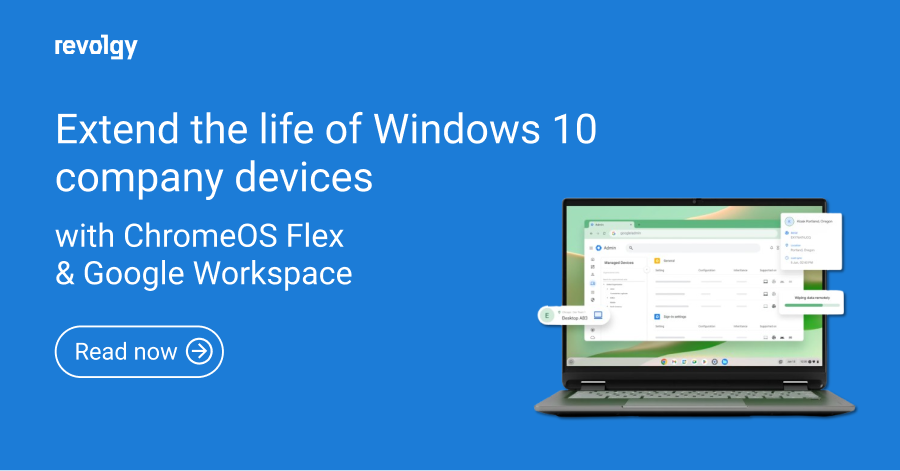Google Workspace, Security
How to prepare for Windows 10 and Windows 11 SE end of support
If you use a computer with Windows, there’s some important news for you. Microsoft is getting ready to end its support for two operating systems. First, support for Windows 10 will end on October 14, 2025. Next, a special version called Windows 11 SE will also lose support in October 2026.
After these dates, computers with these systems will stop getting security updates. If you run either of these versions, you might want to consider your options going forward; otherwise, you are likely to face security risks.
What happens when Windows 10 support stops
Windows 10, the successor to Windows 8.1, was released in 2015, and ten years later, its reign is coming to an end. For years, this version was the most widely used across the globe, with Windows 11 taking over only in July of this year. As of now, Windows 10 is still used by over 44 percent of people worldwide.
However, mid-October marks the end of support for Windows 10, and when it does end, Microsoft will no longer send out security fixes or other updates. Your computer will still work, but it will be at a higher risk from viruses and other online threats.
Over time, you might also find that new programs and devices no longer work with Windows 10. This is because companies that make software will start focusing on newer systems. It could also make you work harder if your company uses Microsoft 365, as support for it on Windows 10 also ends on the same day. The same goes for older versions of Office, like Office 2016 and 2019.
Windows 11 SE support is ending, too
Windows 11 SE was a special, simpler version of Windows made for low-cost computers used in schools. Microsoft is also ending support for this system.
After October 2026, these devices won’t get any more updates — including software updates, technical assistance, and security fixes. This means educational institutions that use these computers will need to find a new plan to keep their students’ work safe and secure.
What are your options for the end of support?
You have a few options to think about before the support ends. Here’s a look at your main options:
1. Upgrade to Windows 11
For most people with a newer computer, the easiest thing to do is upgrade to Windows 11. If your PC is eligible, you can upgrade to Windows for free by going to Settings > Privacy and Security > Windows Update.
Microsoft has a free tool called “PC Health Check” that can tell you if your computer is able to run it. If it is, the upgrade is free. Check if you have this app installed on your PC. If not, you can download it for free here: https://aka.ms/GetPCHealthCheckApp.
Older devices, especially those manufactured before 2018, may not be able to handle the transition to Windows 11 due to a missing TPM 2.0 security chip or an older processor. For some devices, especially laptops, adding the chip later is not an option.
There are ways to install Windows 11 on unsupported devices, but users should be aware of the potential issues that Microsoft itself has highlighted.
2. Pay for extra security updates
If you can’t upgrade your computer right away, Microsoft will let you pay for extra security updates for Windows 10. This program is called Extended Security Updates (ESU), and it can protect your device for up to three more years. Just keep in mind that the price for this service isn’t low and goes up every year.
3. Buy a new computer
If your current computer is too old to run Windows 11, you may want to consider getting a replacement. New computers today come with modern software already installed and are usually faster and use less power.
4. Switch to a different operating system
You can keep your current computer but change its operating system. One option is ChromeOS Flex from Google. As we’ve written about before, this system can give older computers a new life.
ChromeOS Flex replaces Windows on your machine and works mainly from the cloud. It’s designed to be fast, even on older hardware. It’s also built to be very secure, with automatic updates that happen in the background. If your company uses Google tools like Gmail and Google Docs (part of Google Workspace), you can manage all your ChromeOS Flex computers from one simple control panel.
Another option is to switch to Linux, which is free, secure, and you can customize it, but it may be quite time-consuming and expensive to retrain your staff.
How to get ready for the change
The best advice is not to wait until the last minute. You can start by using the PC Health Check tool to see if your computer can be upgraded. And no matter what you decide to do, it’s always a good idea to back up all your important files first.
Once you know what your computer can handle, you can decide which option is best for you: upgrading, buying a new machine, or switching to something new like ChromeOS Flex. If you’re thinking about that last option for your company, talking to a tech expert who knows Google’s tools can be very helpful.
At Revolgy, for instance, we’re a Google Premier Partner, so we have a lot of experience helping businesses make this kind of change. Contact us today to find out more about your options.
FAQs
1. When exactly does support for Windows 10 end?
Support for Windows 10 will officially end on October 14, 2025.
2. Will my computer stop working after that date?
No, your computer will continue to work. However, it will stop receiving security updates, which means it will be more vulnerable to viruses and other security risks.
3. Will my Microsoft Office applications still work?
If you use Microsoft 365, the apps will continue to work on Windows 10 after the support date, but they will no longer be supported and could run into issues. For one-time purchases, support for Office 2016 and Office 2019 also ends on October 14, 2025.
4. What are the biggest risks of using Windows 10 after support ends?
The main risk is security. Without security updates, your personal information could be at risk. Over time, you may also find that new software and applications are no longer compatible with your computer.
5. How do I know if my PC can run Windows 11?
Microsoft provides a free application called the “PC Health Check” tool. It will scan your computer and let you know if it meets the requirements to upgrade to Windows 11.
6. Is the upgrade to Windows 11 free?
Yes, if your current Windows 10 PC meets the minimum hardware requirements for Windows 11, the upgrade is free.
7. What are my options if my computer can’t run Windows 11?
You have a few choices. You can buy a new PC that comes with Windows 11, you can continue using Windows 10 (while understanding the risks), or you can switch your current computer’s operating system to something new, like ChromeOS Flex. For businesses, Microsoft also offers a paid program for Extended Security Updates (ESU).
8. What is happening with Windows 11 SE?
Windows 11 SE, the version for schools, is also being discontinued. Its support will end in October 2026. Schools using these devices will need to transition to another operating system to continue receiving updates.



